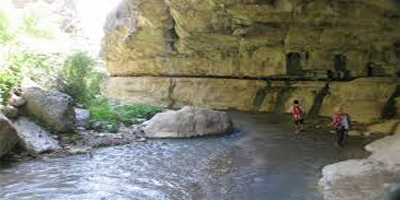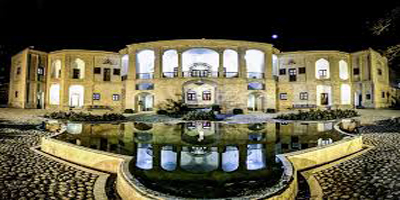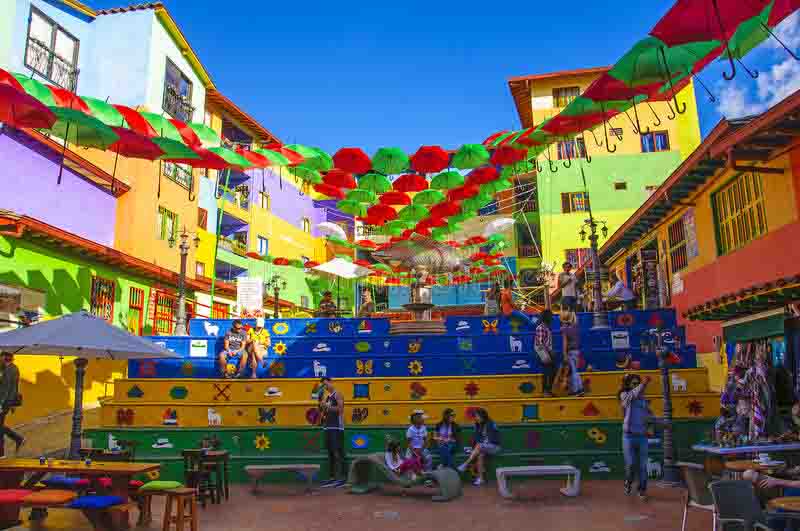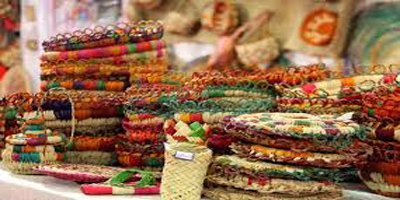Minakari: Art Of Painting, Coloring And Decorating Surface Of Metals
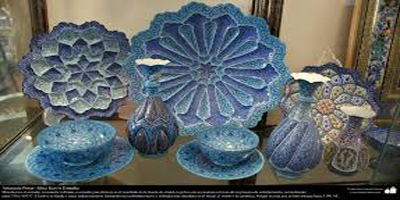
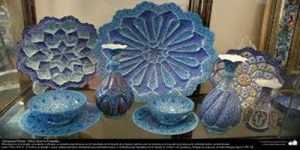
The art of minakari or enamelling is used as a miniature of the fire as well as the decoration of metal and tiles with mina glaze. Minakari or enamelling is the art of painting, coloring and decorating the surface of metals by merging over them brilliant colors that are decorated in a complex design.
Mina is the feminine form of Minoo in Persian, which means Heaven. Mina refers to the azure color of the sky. The Iranian craftsmen of the Sasanied era invented this art and Mongols spread it to India and other countries. The French tourist Jean Chardin, who traveled Iran during the Safavid journey, refers to an enamel work of Isfahan, which contains a pattern of birds and animals on a floral background in light blue, green, yellow and red.
Some experts associate the historicity of enameling in Iran with the Arsacids and Sassanids. However, the use of this art in the Islamic period before the rule of the seventh ruler of the Ilkhanid Department of the Mongolian Empire in Iran, Ghazan Khan (694-703 AH), which Mongol introduced Persia to Islam, is not clear.
Ghazan Khan purchased the chemistry chemistry in a short time and preferred to use his knowledge and his efforts to the art of enamelling.
Fine silver is used in almost all enamels because the melt (glass) melts and best adheres to a pure metal. In simple terms, enameling is the process of producing metal models (fine silver in general) and then melting different colors and types of glass on the model to create an objet d’art.
In a more scientific approach, melt (or vitreous enamel or porcelain enamel in US English) is defined as the colorful result of fusing powder glass onto a substrate by firing, typically between 750 and 850 degrees Celsius.
The powder melts, flows and cures to a smooth, durable glassy coating on metal, glass or ceramics. According to some sources the word melt comes from the High German word smelzan (to smell) over the old French esmail. As a noun, a melting plant is a typically small decorative object coated with an enamel coating, such as a champlev® or a cloisonn.
The paintings or patterns used for fusion work in Iran are traditional designs depending on the taste and preferences of the artist. In the Iranian version of enameling, copper and silver are the dominant metals. There are also special tools that are used in this old artistic endeavor such as oven, pliers, press machine, brush and so on.
Enamel is usually used to embellish vases, jewelery and candlesticks in addition to doors and chandeliers of sacred shrines. Isfahan is the main Iranian enamel. Enamel works can be washed with lukewarm water, soap and even ordinary detergents.
Gold has traditionally been used for minakari jewelery as it keeps the enamel better, lasts longer and its shine brings the colors of the enamel. Silver, a later introduction, is used for artefacts such as boxes, bowls, spoons and tricks, while copper, which is used for craft products, was introduced only after the Gold Control Law, which forced the minakars to look for a material other than gold All over the world.
Enamelling and decorating metals with colorful and baked coats is one of the most notable artistic directions in Isfahan. Mina, defined as a kind of vitreous colored layer which can be stabilized by heat on various metals, in particular copper. Although this course is industrially used industrially for the production of metal and hygienic devices, it has long ago attracted great attention from painters, goldsmiths and metal engravers. In the world, it is categorized into three types as below:
۱- painting enamel
۲- Charkhaneh or chess like enamel
۳- Cavity enamel
What is more availability in Isfahan is the varnishing lacquer, some of which have remained in the museums of Iran and abroad, which indicated that Iranian artists were interested in this art, and in their metalworks since the Achaemenids and the Sassanid dynasties Used. The enamel, which is so delicate, we have not left many of them from the old times. Some documents show that during the entire Islamic civilization of and during the Seljuk, Safavid and Zand dynasties, there were excellent enamelled food and materials.Most of the enamelled plates related to the past belong to the Qajar Dynasty between the years 1810-1890 AD. There are also some earrings remaining. Bracelets, boxes, waterpipes, vases and golden plates with beautiful paintings in blue and green colors from this time. This was followed by fifty years of stagnation through the First World War and the social revolution. However, this painting, after being prepared, was supported by the efforts of Ostad Shokrollah Sani’e zadeh, the outstanding painter of Isfahan in 1935, and forty years by the quantitative and qualitative standpoints.
The technique of this art brings persistence and reflection. In Minakari, an ornament is made of silver and then the artist draws the desired design. It is then outlined by the engraver to adhere the melt firmly to the metal. Enameller then brushed the ornament on the engraved design with special colors named Mina in red, green, black, yellow, blue etc. A single piece of Mina passes through many tapes before it reaches completion.
The intricate geometric design pattern of Minakari symbolizes various elements of a faith structure that has been developed since the rule of the Mithraism era in the Iranian plateu. Here symbolizes the mediterranean medal Mithra, the sun.
Now, after a few years of stagnation since 1992, this art has begun to continue its fragility, which has many remarkable artists working in this field. To prepare an enamelled dish, we should do the following:
The process of manufacturing minakari is not very complicated. First, a metallic substrate such as copper, silver, or brass is selected and shaped by an experienced copper founder. This layer is the basis of the melt. In the past, the melt had been
Applied to tiles, ceramics or glass, but nowadays copper is more commonly used because it is moldable and flexible. A new and first copper layer is better than a recycled one.Then the body is covered with a white glaze using the dipping technique. Next, it is heated at a maximum temperature of 750 ° C, and the body is re-coated with a glaze of higher quality and reheated.


